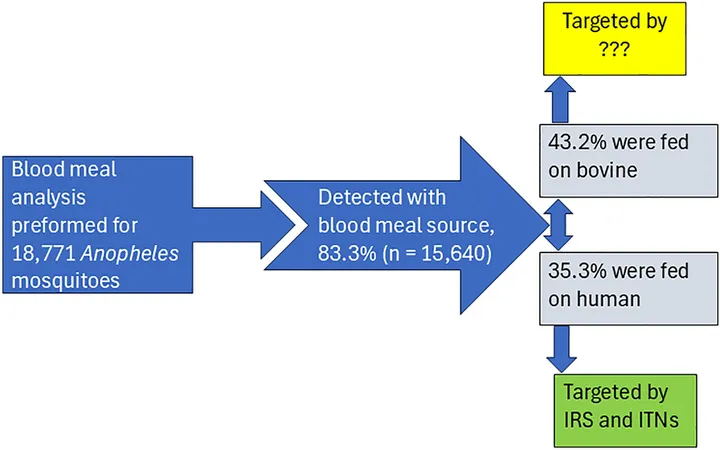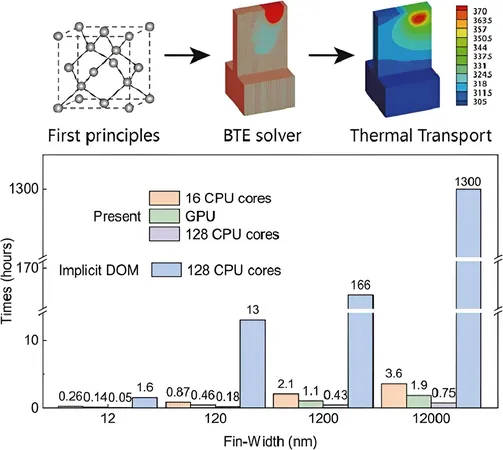
Groundbreaking Stem Cell Research Reveals Unique Molecular Patterns in Human Development
2024-09-25
Introduction
In a revolutionary study from the Johns Hopkins University School of Medicine, researchers have successfully mapped variations in human stem cells that can explain the unique "developmental dance" each individual's cells perform at a molecular level. This game-changing discovery not only deepens our understanding of human biology but also holds the potential to advance personalized medicine and regenerative therapies aimed at repairing or replacing damaged organs.
Study Overview
Published on September 10 in STEM CELL REPORTS, the research focuses on human induced pluripotent stem cells (iPSCs)—sophisticated cells that mimic the versatile nature of early embryonic cells, capable of differentiating into various tissue types. By examining iPSCs derived from multiple donors, the researchers uncovered how genetic and epigenetic influences (factors beyond just DNA) lead to differences in early brain development among individuals.
Key Insights from the Research
Dr. Carlo Colantuoni, an assistant professor at the Johns Hopkins University School of Medicine, emphasizes the importance of this study. He states, "Every human body emerges from a single cell. As this cell divides, it engages in a genetically programmed choreography that shapes our development." While there are fundamental steps in this process that are shared across the human population and extend to the animal kingdom, this research reveals nuanced patterns that contribute to the unique trajectories of each person's development.
Methodology
Utilizing a Nobel Prize-winning technique known as cellular reprogramming, the researchers transformed adult skin cells back to their embryonic state, allowing them to become and function like iPSCs. The cells were then allowed to grow and interact freely in a controlled environment, which helped uncover their natural behaviors and unique characteristics. Through RNA sequencing, which measures gene expression, the researchers gained detailed insights into the molecular activities within these cells.
Findings
By mapping the individual variations seen in the iPSCs to the broader landscape of mammalian development—drawing comparisons with data from developing mouse embryos—the researchers observed systematic variations in how human cells navigate their early development stages, which were consistent across 100 different human stem cell donors.
Types of Developmental Patterns
The analysis revealed two distinct types of developmental patterns from the RNA data. The first type encompassed broad modules that were consistent among all donors, responsible for forming essential organs such as the brain, heart, and liver. The second type of pattern was more nuanced, identifiable only in certain individuals and representing newer evolutionary changes. This suggests that the cellular variations observed not only manifest in the lab but also have lasting impacts throughout the donors' lives.
Implications for Personalized Medicine
Significantly, these individual-specific variations in cellular choreography may hold crucial information regarding a person's health risks and disease susceptibilities over time. Colantuoni believes that these insights could transform personalized medicine, paving the way for tailored healthcare strategies based on a combination of a patient's medical history, genomic data, and living cells.
Future Directions
The ongoing investigation into the molecular mechanisms behind these unique developmental processes is still in its infancy. More extensive studies involving a broader range of donors will be crucial for a deeper understanding of how these intricacies influence long-term health outcomes.
Conclusion
This groundbreaking research suggests a future where medical treatment is not only personalized but also predictive, helping us understand diseases before they manifest, thanks to the intrinsic information held within our cells. As the field of regenerative medicine continues to evolve, the implications of this research could lead to life-changing therapies that address individual health needs with unprecedented precision.





 Brasil (PT)
Brasil (PT)
 Canada (EN)
Canada (EN)
 Chile (ES)
Chile (ES)
 España (ES)
España (ES)
 France (FR)
France (FR)
 Hong Kong (EN)
Hong Kong (EN)
 Italia (IT)
Italia (IT)
 日本 (JA)
日本 (JA)
 Magyarország (HU)
Magyarország (HU)
 Norge (NO)
Norge (NO)
 Polska (PL)
Polska (PL)
 Schweiz (DE)
Schweiz (DE)
 Singapore (EN)
Singapore (EN)
 Sverige (SV)
Sverige (SV)
 Suomi (FI)
Suomi (FI)
 Türkiye (TR)
Türkiye (TR)